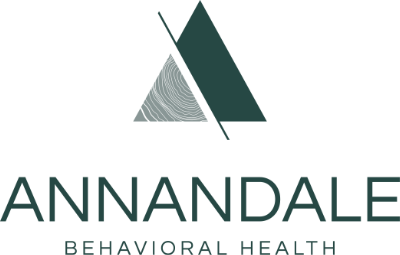Los Angeles County Substance Abuse Statistics
Table of Contents
LA is known for its sunny beaches, relaxed lifestyles, and perfect climate – but Los Angeles County substance abuse is a real problem. Millions of people in Los Angeles County live with substance use disorders and may not be able to stop on their own. Substance use disorders are a serious mental illness – and can lead to difficulties in everyday functioning, damage to close personal relationships, and worsening of co-occurring mental illness.
Fortunately, substance use disorders are highly treatable – and finding a Los Angeles substance abuse treatment center can help you or your loved one to break free from addiction and achieve recovery.
The 10 Types of Substance Abuse
Substance use disorders come in several different varieties. The American Psychiatric Association breaks down substance abuse into ten distinct categories, based on the primary substance of abuse. These include:
- Alcohol-Related Disorders
- Caffeine-Related Disorders
- Cannabis-Related Disorders
- Hallucinogen-Related Disorders
- Inhalant-Related Disorders
- Opioid-Related Disorders
- Sedative, Hypnotic, or Anxiolytic-Related Disorders
- Stimulant-Related Disorders
- Tobacco-Related Disorders
- Other (or Unknown) Substance-Related Disorders
Together, these disorders fall under the collective umbrella of “substance-related and addictive disorders”.
What Qualifies as Substance Abuse?
The qualifications for a substance use disorder are nearly identical for 9 of the 10 substance use disorders – excluding only caffeine-related disorders. Substance use becomes a disorder when it meets certain diagnostic criteria. These criteria are outlined in the Diagnostic and Statistical Manual of Mental Disorders V, and include:
- Craving for substances
- Using more substances than intended, or for longer than intended
- Increased tolerance, meaning you need to use more and more to achieve the desired effect
- Withdrawal symptoms if substance use suddenly stops
- Multiple failed attempts to quit using or cut down on substance use
- Continued substance use despite social or personal problems caused by substance use
- Giving up on social responsibilities, work obligations, or recreation because of substance use
- Using substances when it is dangerous to do so – such as while driving
- Continued substance use despite worsening physical or mental health symptoms
- Spending an inordinate amount of time using, recovering from, or seeking out substance use
- Substance use interferes with work, school, or home life
Like other mental health disorders, substance use disorders occur on a spectrum. Meeting 2-3 of these criteria can result in a diagnosis of a mild substance use disorder; 4-5 is considered moderate, and 6 or more is considered severe.
While many people believe that substance abuse only harms the person using, this is far from the truth. Addiction affects individuals, families, and communities alike, and can have long-reaching effects. The only way to stop addiction’s ripple effect is to start receiving effective addiction treatment.
Substance Abuse Causes
There is no one specific cause of substance abuse, but scientists have discovered several risk factors that predispose people towards addiction. These include:
- A family history of substance abuse
- Genetic factors
- Peer pressure
- Poor academic performance
- Childhood trauma
- Co-occurring mental illness
While these can increase the likelihood that somebody develops a substance use disorder, addiction knows no bounds. It can affect people of any race, gender, social status, or age.
After a person initiates substance use, the reason they develop a disorder becomes clearer. Drugs of abuse affect the brain’s reward network: creating long-lasting changes in its structure. This can make it more difficult for people to enjoy everyday activities and increases the likelihood that they return to substance use repeatedly. In a sense, addiction is a narrowing of what brings people pleasure – and can be terribly difficult to break free from on your own.
Los Angeles County Substance Abuse Statistics
In Los Angeles County, substance abuse rates tend to be close to the national average. The most recent Los Angeles County substance abuse reports come from the 2018 National Survey on Drug Use and Health, which broke down substance abuse rates by region. In Los Angeles County, these rates were:
- Any Substance Use Disorder: 7.59%
- Alcohol Use Disorder: 5.69%
- Pain Reliever Use Disorder: 0.51%
- Illicit Drug Use Disorder: 3.01%
Yet this data doesn’t show the full picture. In 2020, the National Survey on Drug Use and Health changed its methodology to more closely align with the current diagnostic criteria for substance use disorder. As a result, the estimated prevalence of these disorders nearly doubled. While regional statistics for Los Angeles County substance abuse rates using this new methodology have not yet been released, we can extrapolate from national estimates what the current rates may be:
- Any Substance Use Disorder (Adjusted): 14.99%
- Alcohol Use Disorder (Adjusted): 10.79%
- Pain Reliever Use Disorder (Adjusted): 1.11%
- Illicit Drug Use Disorder (Adjusted): 6.62%
These adjusted rates were determined by multiplying Los Angeles County substance abuse rates in 2018 by the percentage increase in national substance use disorder rates from 2018 to 2020.
While substance use disorder, alcohol use disorder, and pain reliever use disorder are all within half a percentage point of the national average – Los Angeles County substance abuse rates are much higher for illicit drug use disorder. The national rate of illicit substance use disorder is 4.4% – much lower than the 6.6% estimated rate in Los Angeles County.
Los Angeles County Overdose Statistics
These high rates of substance use disorders translate directly into real-world consequences for people in Los Angeles County. Substance abuse can have several devastating effects – including loss of life through overdose. Research from the County of Los Angeles Department of Public Health showed that:
- In 2020, over 2,000 people died in Los Angeles County from accidental overdose
- There was a 52.4% increase in overdose deaths between 2019 and 2020
- Methamphetamine and fentanyl were the two most frequently detected drugs involved in drug overdose
Importantly, drug overdose is preventable. If you recognize that you or a family member are struggling with substance use problems, seeking treatment can help you to break free from addiction and build a better life for yourself in recovery.
Getting Help for Substance Abuse in Los Angeles County
Deciding you need help to overcome addiction is an important first step, but choosing the right treatment center can be just as important. At Annandale Behavioral Health, our mission is to provide Los Angeles residents the best treatment experience possible. Located in Pasadena, California, Annandale offers the best evidence-based treatment methods available, a diverse team of medical and addiction treatment professionals, and a focus on holistic health that can’t be matched. Call our team today for a free, confidential consultation at 855-778-8668, and start your journey towards recovery without delay.







